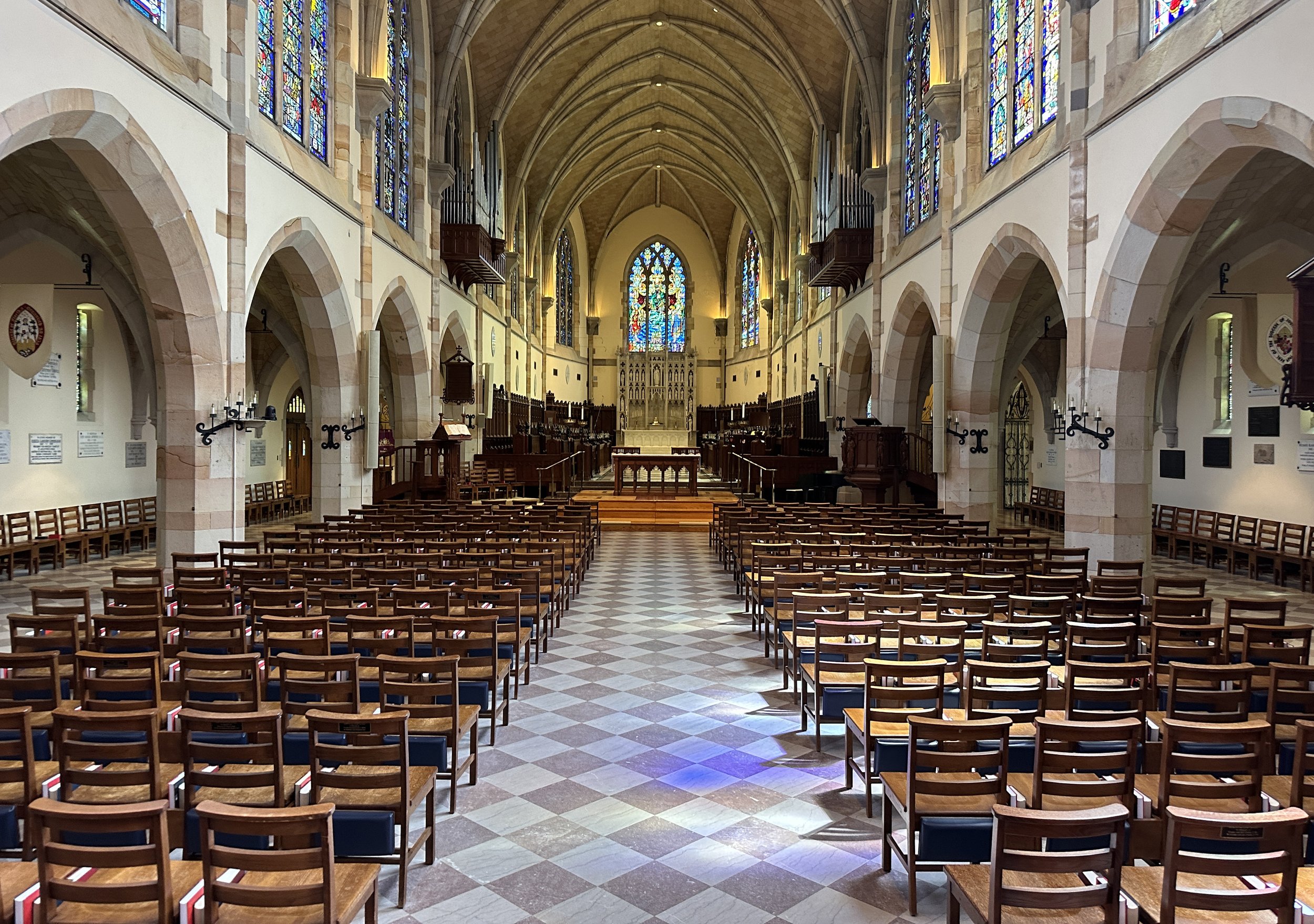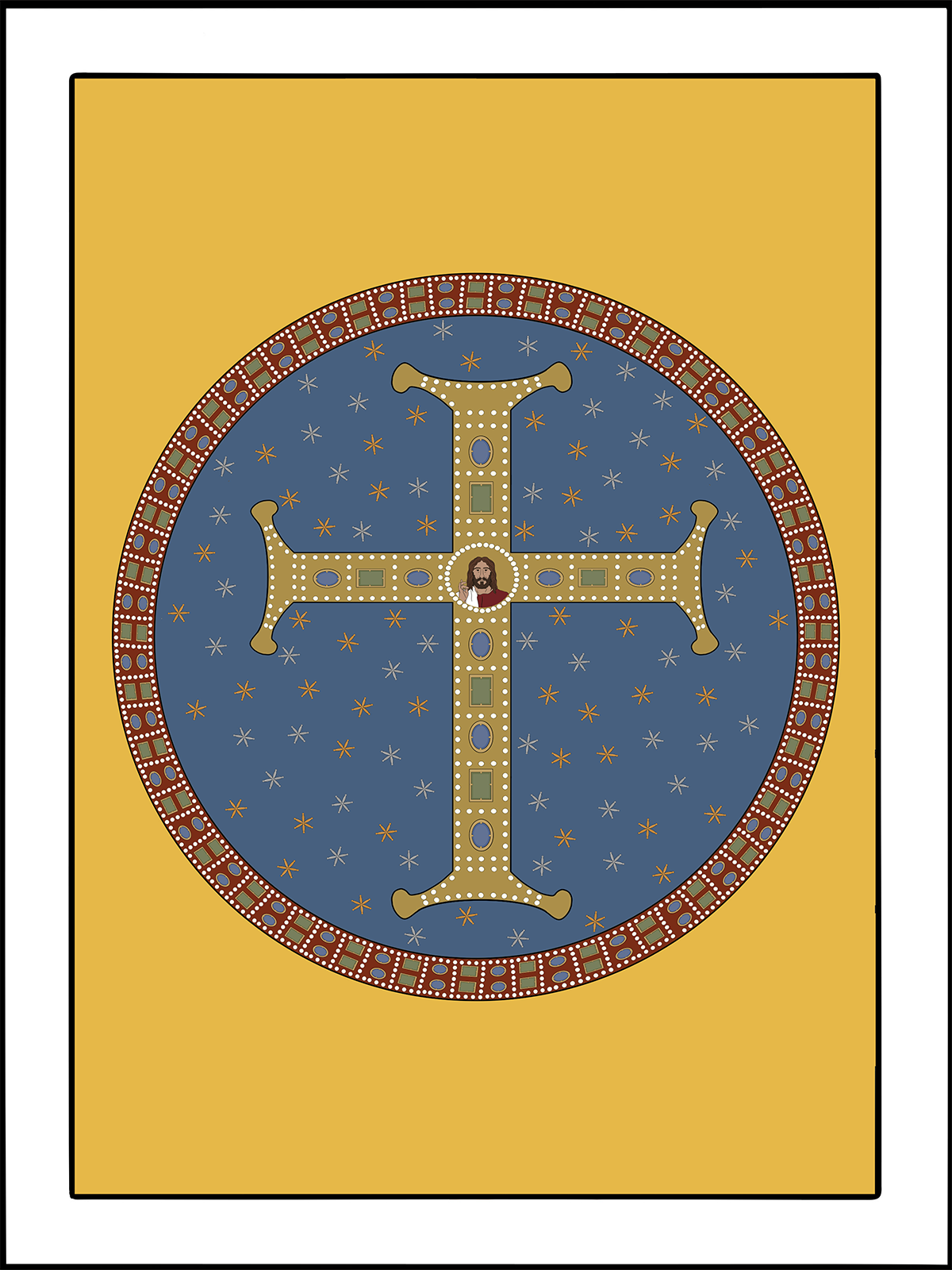
September 14
Holy Cross Day
art by Rev. Kirsten Kohr of Geneva, Ohio Almighty God, whose Son our Savior Jesus Christ was lifted high upon the cross that he might draw the whole world to himself: Mercifully grant that we, who glory in the mystery of our redemption, may have grace to take up our cross and follow him; who lives and reigns with you and the Holy Spirit, one God, in glory everlasting. Amen.
The historian Eusebius, in his Life of Constantine, tells how that emperor ordered the erection of a complex of buildings in Jerusalem “on a scale of imperial magnificence,” to set forth as “an object of attraction and veneration to all, the blessed place of our Savior’s resurrection.” The overall supervision of the work—on the site where the Church of the Holy Sepulchre now stands—was entrusted to Constantine’s mother, the empress Helena.
In Jesus’ time, the hill of Calvary had stood outside the city; but when the Roman city that succeeded Jerusalem, Aelia Capitolina, was built, the hill was buried under tons of fill. It was during the excavations directed by Helena that a relic, believed to be that of the true cross, was discovered.
Constantine’s shrine included two principal buildings: a large basilica, used for the Liturgy of the Word, and a circular church, known as “The Resurrection”—its altar placed on the site of the tomb—which was used for the Liturgy of the Table, and for the singing of the Daily Office.
Toward one side of the courtyard which separated the two buildings, and through which the faithful had to pass on their way from Word to Sacrament, the exposed top of Calvary’s hill was visible. It was there that the solemn veneration of the cross took place on Good Friday, and it was there that the congregation gathered daily for a final prayer and dismissal after Vespers.
The dedication of the buildings was completed on September 14, 335, the seventh month of the Roman calendar, a date suggested by the account of the dedication of Solomon’s temple in the same city, in the seventh month of the Jewish calendar, hundreds of years before (2 Chronicles 7:8-10).
Excerpted directly from “Lesser Feasts and Fasts 2022,” p. 408-409.

